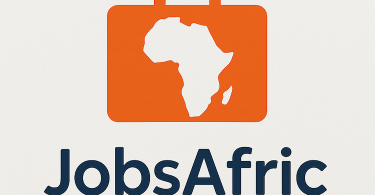Running a business often feels like juggling multiple priorities at once. From managing day to day operations to planning long term growth, leaders must constantly balance resources, budgets, and workforce needs. One critical decision many businesses face is determining when to bring in temporary staff. Temporary staffing firms offer flexibility, expertise, and scalability, but hiring them too early or too late can lead to wasted resources or missed opportunities.
This article explores the key indicators that signal it’s time to partner with a temp staffing firm, the benefits of doing so, and actionable steps to ensure a seamless integration of temporary workers into your team.
1. Recognizing the Signs: When Temporary Staffing Makes Sense
Temporary staffing isn’t just a quick fix for sudden crises it’s a strategic tool to address specific challenges. Here are the most common scenarios where hiring a temp staffing firm becomes a smart move:
A. Seasonal or Cyclical Demand Spikes
Many industries experience predictable fluctuations in workload. Retailers face holiday rushes, accounting firms navigate tax season, and hospitality businesses ramp up for summer tourism. If your business struggles to keep up with recurring busy periods, temporary workers can bridge the gap without the long term commitment of full time hires.
Key Questions to Ask:
-
Does your revenue or workload follow a seasonal pattern?
-
Have past busy seasons led to employee burnout or customer service issues?
-
Are you hesitant to hire full time staff for short term needs?
If you answered “yes,” a temp staffing partnership can provide on demand labor tailored to your schedule.
B. Sudden Project Loads or Deadlines
Unexpected opportunities like landing a large client contract or launching a new product can strain existing teams. Temporary workers with specialized skills (e.g., IT professionals, marketing specialists, or event planners) allow you to scale up quickly and meet tight deadlines without overburdening permanent staff.
Example: A small e-commerce company wins a major wholesale order but lacks the warehouse staff to fulfill it on time. A temp agency supplies experienced logistics workers for the 8 week project, preventing delays and preserving customer relationships.
C. Employee Absences or Turnover Gaps
Vacations, medical leaves, or sudden resignations can leave critical roles unfilled. Temp workers act as stopgaps, ensuring operations continue smoothly while you recruit permanent replacements or wait for employees to return.
Warning Signs:
-
Managers are covering multiple roles, leading to burnout.
-
Customer complaints rise due to understaffing.
-
Training new hires takes longer than expected.
D. Testing New Roles or Markets
Expanding into a new market or launching a untested department carries inherent risks. Temporary hires let you pilot initiatives without long-term financial commitments. For instance, a bakery considering a catering division could hire temp event staff for a few months to gauge demand before investing in full time employees.
2. The Hidden Costs of Waiting Too Long
Delaying the decision to hire temporary staff can have cascading consequences:
-
Lost Revenue: Understaffing during peak periods leads to unfulfilled orders or poor service quality, driving customers to competitors.
-
Employee Burnout: Overworked teams experience higher turnover, increasing recruitment and training costs.
-
Missed Opportunities: Without the bandwidth to take on new projects, growth stagnates.
Temporary staffing firms mitigate these risks by providing agility. The key is to act before the strain becomes unsustainable.
3. Benefits Beyond Flexibility: Why Temp Staffing Pays Off
While flexibility is the most obvious advantage, temp staffing offers deeper strategic value:
A. Cost Efficiency
Hiring full time employees involves expenses like benefits, payroll taxes, and onboarding. Temp workers are typically paid hourly through the agency, which handles administrative burdens. This model converts fixed labor costs into variable ones, freeing capital for other investments.
B. Access to Specialized Skills
Temp agencies maintain pools of pre vetted professionals with niche expertise, from graphic designers to CNC machinists. This is especially valuable for small businesses lacking in house talent for short term projects.
C. Reduced Hiring Risks
Bad hires cost time and money. Temp to perm arrangements let you evaluate workers’ performance and cultural fit before offering permanent roles.
D. Compliance and Legal Protection
Labor laws around overtime, safety, and benefits are complex. Reputable temp agencies assume liability for compliance, reducing legal risks for your business.
4. How to Choose the Right Temp Staffing Firm
Not all temp agencies are created equal. Follow these steps to find a partner aligned with your needs:
Step 1: Define Your Requirements
-
Skills Needed: List technical abilities, certifications, or industry experience required.
-
Duration: Determine if you need workers for days, weeks, or months.
-
Budget: Calculate the hourly rate you can afford, including the agency’s fees.
Step 2: Vet Potential Agencies
-
Industry Expertise: Look for firms specializing in your sector (e.g., healthcare, manufacturing).
-
Reputation: Read reviews or ask for client references.
-
Screening Process: Ensure they conduct background checks, skills assessments, and interviews.
Step 3: Negotiate Terms
-
Clarify fees, cancellation policies, and guarantees (e.g., free replacements if a worker isn’t a fit).
-
Discuss confidentiality agreements to protect sensitive projects.
5. Integrating Temp Workers Successfully
Temporary staff can only deliver value if they’re set up for success. Implement these best practices:
A. Onboard Thoroughly
Even short term workers need clarity on their roles. Provide:
-
A brief orientation on company culture and safety protocols.
-
Clear instructions for tasks, deadlines, and quality standards.
-
A point of contact for questions.
B. Foster Inclusivity
Temporary workers often feel like outsiders, which hampers productivity. Include them in team meetings, recognize their contributions, and offer feedback.
C. Track Performance
Use metrics like output quality, attendance, and team feedback to assess whether temp workers meet expectations. Share this data with the agency to refine future placements.
6. When Not to Hire a Temp Staffing Firm
Temporary staffing isn’t always the answer. Avoid it in these scenarios:
-
Long Term Skill Gaps: If a role requires deep institutional knowledge, hire permanently.
-
Cultural Overhauls: Temp workers can’t fix toxic workplace cultures that requires internal leadership changes.
-
Budget Constraints: If agency fees strain your finances, consider alternatives like freelancers or cross training existing staff.
Hiring a temp staffing firm is a strategic decision that hinges on timing, needs, and goals. By recognizing the signs seasonal spikes, sudden projects, employee gaps, or growth experiments you can leverage temporary workers to maintain momentum, reduce costs, and seize opportunities without overextending your team.
The key is to partner with a reputable agency, integrate temps thoughtfully, and continuously evaluate their impact on your operations. When used wisely, temporary staffing isn’t just a Band Aid solution it’s a catalyst for resilience and growth in an unpredictable business landscape.





Leave a Comment